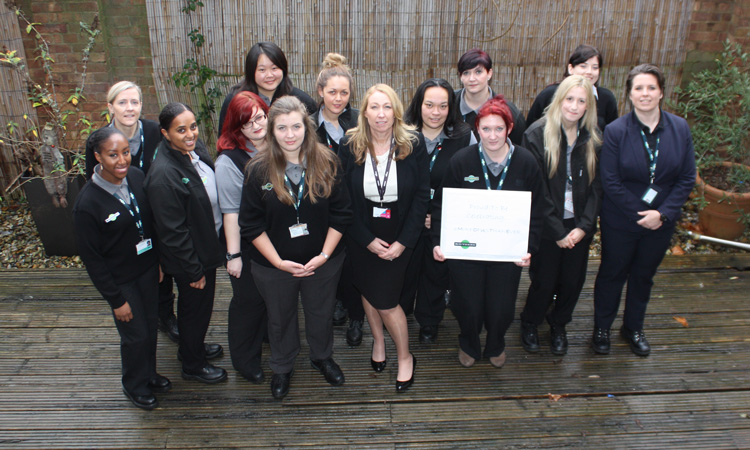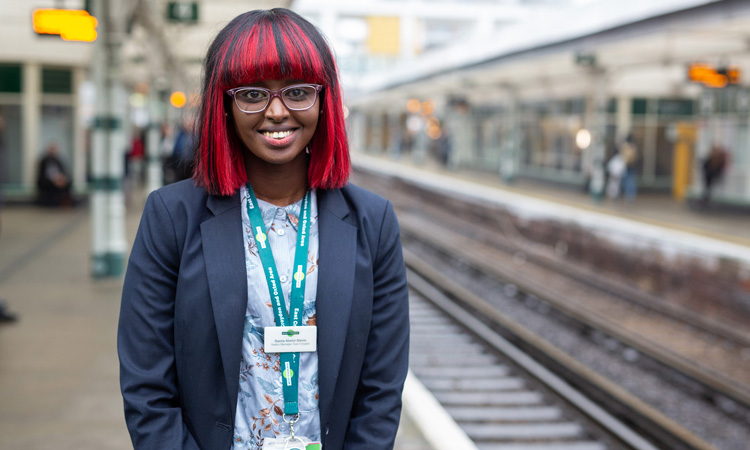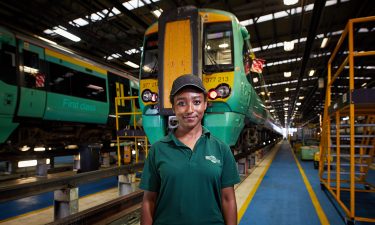Championing diversity: the changing face of the 200-year-old rail industry
- Like
- Digg
- Del
- Tumblr
- VKontakte
- Buffer
- Love This
- Odnoklassniki
- Meneame
- Blogger
- Amazon
- Yahoo Mail
- Gmail
- AOL
- Newsvine
- HackerNews
- Evernote
- MySpace
- Mail.ru
- Viadeo
- Line
- Comments
- Yummly
- SMS
- Viber
- Telegram
- Subscribe
- Skype
- Facebook Messenger
- Kakao
- LiveJournal
- Yammer
- Edgar
- Fintel
- Mix
- Instapaper
- Copy Link
Posted: 6 March 2020 | Angie Doll - Southern Railway and Gatwick Express | No comments yet
Angie Doll, Managing Director at Southern Railway and Gatwick Express, explains how diversity and the realisation of skills are key to the development of the rail industry, and details how the operator has embarked on a recruitment drive.


The creation of the railway in the mid-1800s brought new employment opportunities for people in Britain. Whilst at Southern Railway and Gatwick Express we continue to see technology change the way we operate, one thing that has remained a reliable constant since the early days of rail is indeed the need for excellent people.
Though functionality – and of course, the trains themselves – have evolved, 2020 is no different when it comes to the breadth of opportunity in this fantastic industry.
But in order to ensure that we are evolving in tandem with technology, the workforce at the heart of our business must do so too. Traditionally a male-dominated sector, this shift requires dedication and focus as it is changing the employee make-up of an industry with a history so rich, that it remains one of few where award ceremonies are frequently held to celebrate extensive service commitments.
Getting women on-board
The wealth of career opportunities is almost limitless in the rail sector. With our sister brands under Govia Thameslink Railway (Thameslink and Great Northern), we are supported by more than 7,500 employees in roles including gateline assistants, drivers, ticket office sales, stakeholder managers, train planners, operational managers, communications officers, human resources, to name just a few.
To attract more women and young people to consider a career in rail, last year we embarked on the industry’s biggest rail recruitment drive.
Supporting the four brands under GTR, this campaign is helping us change the demographics of our workforce, and crucially, the wider pool of talent joining the industry. As the UK’s largest rail franchise, we have a real responsibility – and opportunity – to support and shape the next generation.
Though functionality – and of course, the trains themselves – have evolved, 2020 is no different when it comes to the breadth of opportunity in this fantastic industry
The main purpose for recruiting more women into driver positions is to tackle gender imbalance and bring more diversity of both gender and thinking into our driver depots. The progressive approach we are taking with the industry’s biggest recruitment programme will help the organisation flourish and drive long-lasting change across the sector.
That being said, increasing the number of female drivers is not a ‘tick box exercise.’ On the contrary, the process of becoming a driver is an intense one for all who go through it. The application process is vigorous and lengthy, with multiple points for potential failure, though I’ve been pleased to see the number of applications from women steadily increasing alongside our recruitment push.


This challenging process helps us whittle down the huge number of applicants – we receive more than 1,000 applications per available role – and identify those with the skills we need in our trainees. There are many safety rules and precautions involved in train driving, meaning the ability to remain focused and calm is imperative. There is a lot to deal with every day in such a fast-paced and dynamic working environment, so this isn’t a job for everyone.
We want our teams to reflect the communities they serve. The aim is for our drivers to mirror the local population, as an accurate representation of society. This ethos feeds into all areas of the business and is in many ways centric to our relationship with our passengers.
In my role as MD for Southern and Gatwick Express, I get to meet many of the brilliant new recruits joining the organisation, and it’s been fantastic to see how the demographics of our growing workforce has changed since I joined the industry more than 20 years ago, as a Station Manager at Brighton.
Here are some of the results we’ve achieved in increasing our female applicants and recruits:
- Increased number of female train drivers from two per cent three years ago to six per cent today
- 29 per cent of current trainee drivers are female, up from 18 per cent in 2017– target is that by 2021, 40 per cent of applicants will be female.
The next rail generation


To help tackle this, we have committed to more than double our intake of apprentices, increasing the total number for 2020 to 3001, offering programmes across engineering, management and customer service, as well as introducing a new train driver apprenticeship; a first for the industry and something we hope will really appeal to younger people and women.
The aim is for our drivers to mirror the local population, as an accurate representation of society
Our apprentice schemes reflect the true diversity of opportunities and possibilities that a career in rail can offer and are open to people of all ages and backgrounds.
We have also further committed to our ‘Get into Railways’ programme which we run in partnership with The Prince’s Trust. This customer service scheme is run three times a year and over the last five years, has seen GTR offer 84 per cent of participants full-time roles, something that I and the team are very proud of.
The programme is tailored for those aged 18-25, who have struggled to get into employment, come from a disadvantaged background or have faced challenging personal or family circumstances. The programme involves two weeks in the classroom, where participants learn customer service skills, conflict management, first aid and money management. During the second part of the course, they gain two weeks’ work experience within GTR’s network, based on site.
Our proactive approach to diversity and recruitment, coupled with our commitment to excellent customer service, will not only help our organisation flourish but will also help to drive real change across the industry.
Empowering our people for our passengers
To build on the increasing diversity of our teams, we have committed to empower our people across the entire network to really put passengers at the heart of our decision making, after all, they know them best!
To support our more-empowered platform, station and on-board staff, we have refreshed our brand messaging to “We’re with you,” putting our people side-by-side with our passengers. Running across all four brands, the new identity puts GTR side-by-side with our customers. By putting staff at the heart of the public-facing campaign, the message is focused on supporting the customer journey and aims to demonstrate the dedication that GTR has to put customers at the heart of its business.
Reference
1. Across whole of GTR which includes Southern, Gatwick Express, Thameslink & Great Northern brands.
Biography
Angie Doll is the Managing Director at Southern Railway and Gatwick Express. Some 25 years ago, Angie began as a Station Manager at Brighton Station, before rising through the ranks to being MD for the Gatwick Express & Southern Rail lines. Angie is the only Female C-suite member at Govia Thameslink Railway (GTR), and one of very few across the Rail industry. Angie’s position is heavily focussed on diversity in the workplace and supporting local communities – especially within employment in the engineering and operations sectors.
Related topics
Public Transport, Staff & Skills Development, Workforce Inclusivity
Related modes
Rail
Related cities
UK
Related organisations
Gatwick Express, Govia Thameslink Railway, Southern Railway








